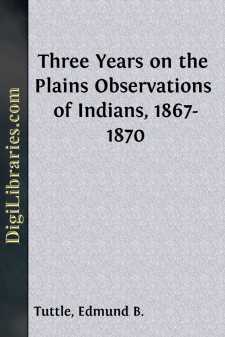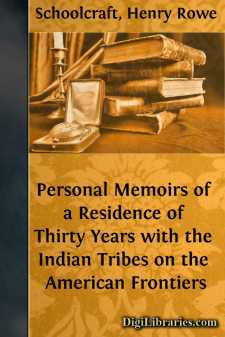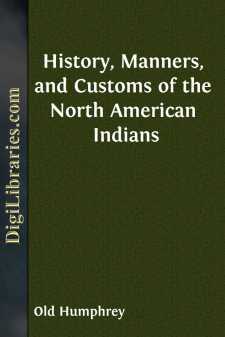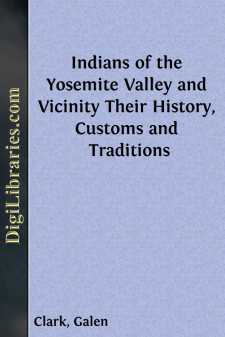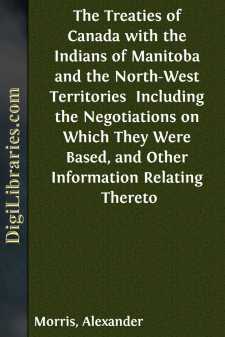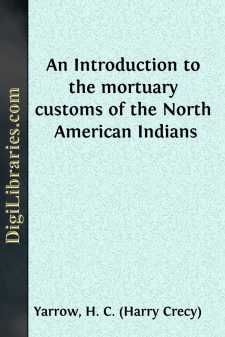History
- Africa 30
- Americas (North Central South West Indies) 50
- Ancient 68
- Asia 58
- Australia & New Zealand 8
- Canada 41
- Caribbean & West Indies 1
- Civilization 20
- Eastern Europe 12
- Europe 310
- Expeditions & Discoveries 60
- General 77
- Historical Geography 1
- Jewish 9
- Latin America 3
- Medieval 8
- Middle East 13
- Military 248
- Revolutionary 8
- Study & Teaching 5
- United States 353
- Western Europe 56
- World 13
History Books
Sort by:
by:
Edmund B. Tuttle
INTRODUCTION The interest which boys are taking in all that relates to our Indian tribes, and the greediness they manifest in devouring the sensational stories published so cheaply, filling their imaginations with stories of wild Indian life on the plains and borders, without regard to their truthfulness, cannot but be harmful; and therefore the writer, after three years' experience on the plains,...
more...
SKETCHES LIFE OF HENRY A. SCHOOLCRAFT. The early period at which Mr. Schoolcraft entered the field of observation in the United States as a naturalist; the enterprise he has from the outset manifested in exploring the geography and geology of the Great West; and his subsequent researches as an ethnologist, in investigating the Indian languages and history, are well known to the public, and may be...
more...
BIOGRAPHICAL NOTE The author of this book was born in a teepee of buffalo hide near Redwood Falls, Minn., during the winter of 1858. His father was a full-blooded Sioux called "Many Lightnings," (Tawakanhdeota). His mother, the granddaughter of Chief "Cloud Man" of the Sioux and daughter of a well-known army officer, died shortly after his birth. He was named Ohiyesa (The Winner). The...
more...
THE INDIAN QUESTION. On the 3d of March, 1871, Congress declared that "hereafter no Indian nation or tribe within the territory of the United States shall be acknowledged or recognized as an independent nation, tribe, or power, with whom the United States may contract by treaty." Brave words these would have seemed to good William Penn, treating with the Lenni Lenape, under the elm at...
more...
CHAPTER I. THE APPROACHES TO AMERICA Across the twilight lawn at Hampton Institute straggles a group of sturdy young men with copper-hued complexions. Their day has been devoted to farming, carpentry, blacksmithing, or some other trade. Their evening will be given to study. Those silent dignified Indians with straight black hair and broad, strong features are training their hands and minds in the hope...
more...
by:
Old Humphrey
CHAPTER I It was on a wild and gusty day, that Austin and Brian Edwards were returning home from a visit to their uncle, who lived at a distance of four or five miles from their father’s dwelling, when the wind, which was already high, rose suddenly; and the heavens, which had for some hours been overclouded, grew darker, with every appearance of an approaching storm. Brian was for returning back;...
more...
by:
Galen Clark
Chapter One. EARLY HISTORY. During the past few years a rapidly growing interest in the native Indians has been manifested by a large majority of visitors to the Yosemite Valley. They have evinced a great desire to see them in their rudely constructed summer camps, and to purchase some articles of their artistic basket and bead work, to take away as highly prized souvenirs. They are also anxious to...
more...
by:
Alexander Morris
INTRODUCTION One of the gravest of the questions presented for solution by the Dominion of Canada, when the enormous region of country formerly known as the North-West Territories and Rupert's Land, was entrusted by the Empire of Great Britain and Ireland to her rule, was the securing the alliance of the Indian tribes, and maintaining friendly relations with them. The predecessors of Canada--the...
more...
by:
Lewis H. Morgan
PREFACE. The following work substantially formed the Fifth Part of the original manuscript of "Ancient Society," under the title "Growth of the Idea of House Architecture." As the manuscript exceeded the limits of a single volume, this portion (Part V) was removed, and having then no intention to publish it separately, the greater part of it found its way into print in detached...
more...
The mortuary customs of savage or barbaric people have a deep significance from the fact that in them are revealed much of the philosophy of the people by whom they are practiced. Early beliefs concerning the nature of human existence in life and after death and the relations of the living to the dead are recorded in these customs. The mystery concerning the future love for the departed who were loved...
more...


